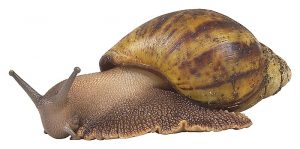An award-winning Fishguard restaurant and its two directors have been ordered to pay more than £15,200 for food safety offences, with one of them prohibited from operating a food business.
 Both directors of JT3 Restaurant in Fishguard, Daniel Wynne Jones and Lois Thomas, along with their company Me‘n’u1 Ltd, pleaded guilty to all offences at Haverfordwest Magistrates Court on Friday, 3 July.
Both directors of JT3 Restaurant in Fishguard, Daniel Wynne Jones and Lois Thomas, along with their company Me‘n’u1 Ltd, pleaded guilty to all offences at Haverfordwest Magistrates Court on Friday, 3 July.
They were fined a total of £10,700 with more than £4,500 costs, and Daniel Wynne Jones was also banned from operating a food business.
In a prosecution brought by Pembrokeshire County Council, the court heard that the premises was issued a Food Hygiene Rating of 0 following an inspection in March 2019 by an officer from the authority’s Public Protection Division.
During the inspection the officer found the basement kitchen to be in a poor state of cleanliness and repair, with no disinfecting cleaning products or soap available, an inadequate water supply and flies present. There was no evidence of any food safety management system in use and the business scored a 0 food hygiene rating.
Two revisits were made to check for improvements, which were made, but the business failed to display their food hygiene rating sticker and had to be supplied with a new one, along with a warning.
Subsequent visits saw the sticker being hidden behind doors and then behind an umbrella hanging from a hook above it. A fixed penalty fine for the offence of failing to display the sticker went unpaid.
On 13 December 2019 another inspection was carried out at the restaurant. On arrival officers were told that the business was closed, but once in the kitchen, they found that a substantial amount of food preparation was going on and were dismayed to find that conditions had deteriorated again, including the ongoing poor structural condition and complete lack of any implemented food safety controls in relation to the safe production of food. Again, the business scored a 0 Food Hygiene rating.
By 19 December the situation had worsened to the point that two visits had to be made that day and a Remedial Action Notice served to prevent the manufacture of chicken liver parfait and duck. Improvement notices were also served to try to address the level of training and ensure that food safety procedures were introduced and sustained.
Unfortunately these improvement notices were not complied with and the food hygiene rating sticker remained deliberately hidden.
As well as the fine, costs of £4571.11 were awarded to the county council, with victim surcharges of £240.
And, on the 50th anniversary of Workingman’s Dead, one of my favorite albums, enjoy.








